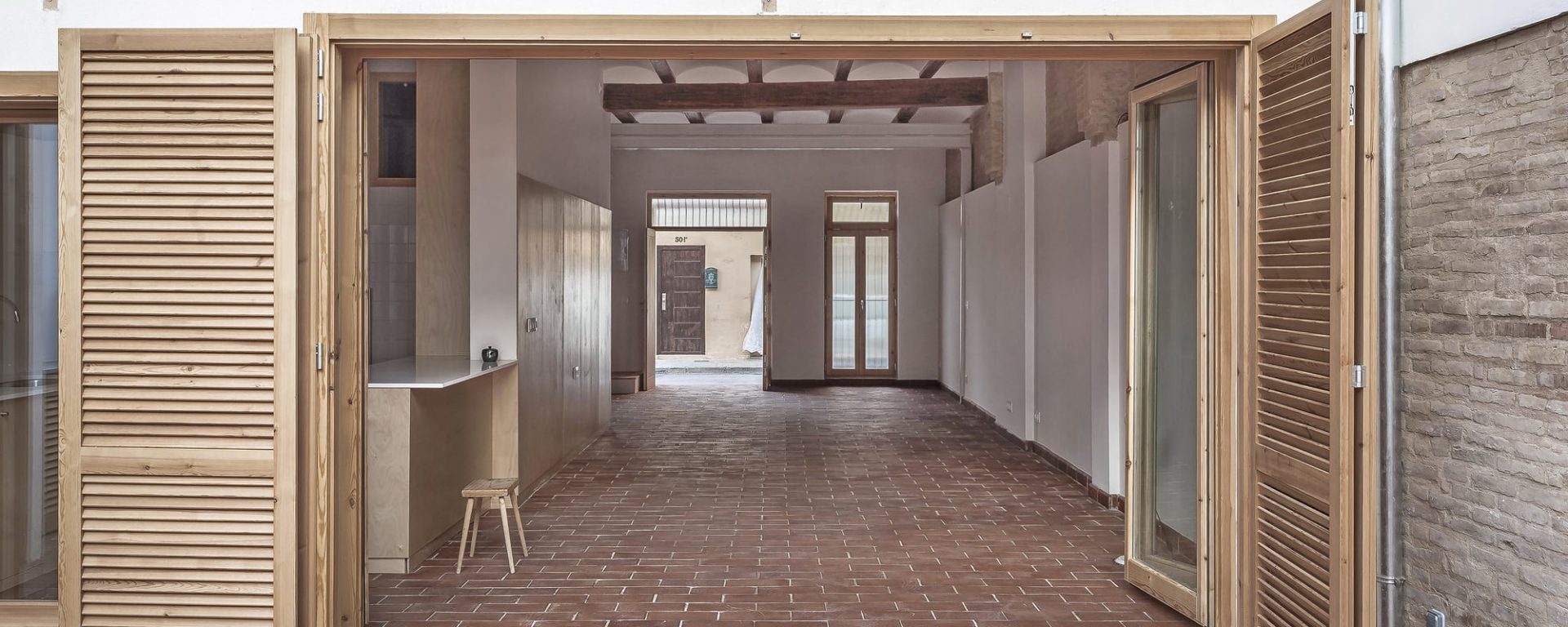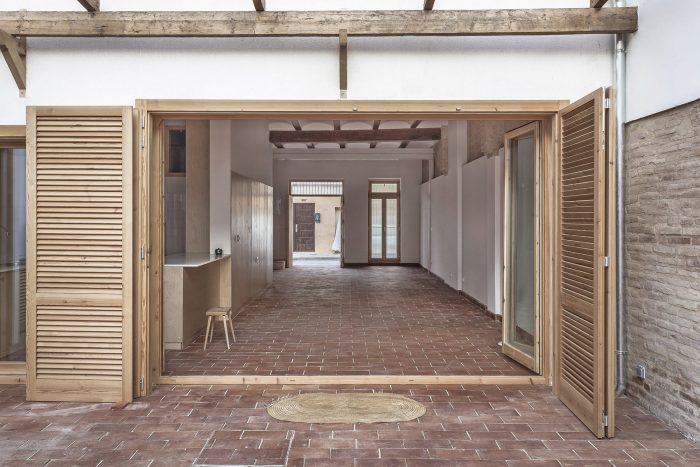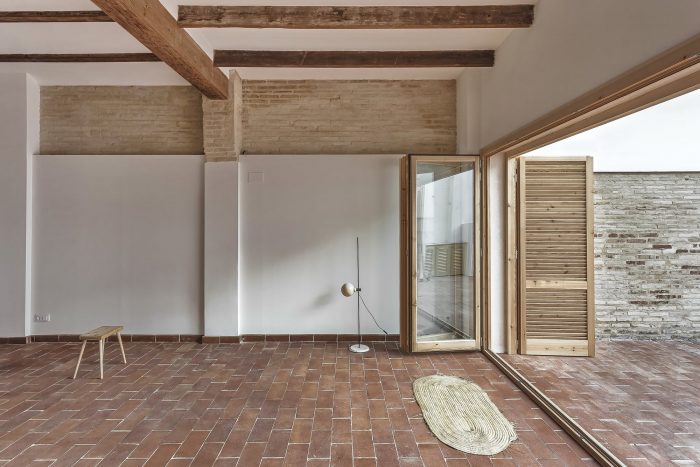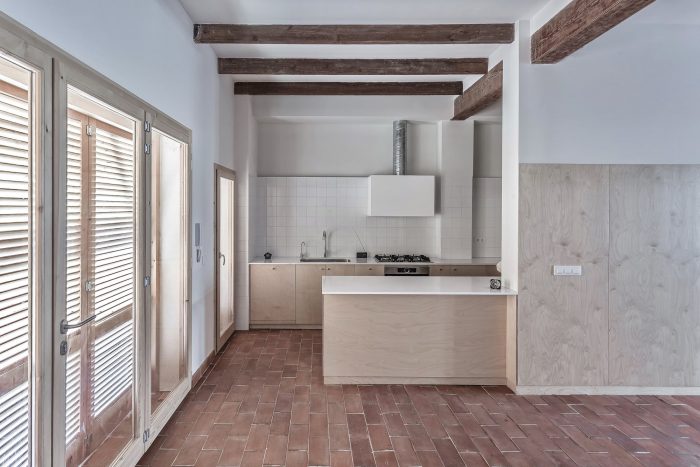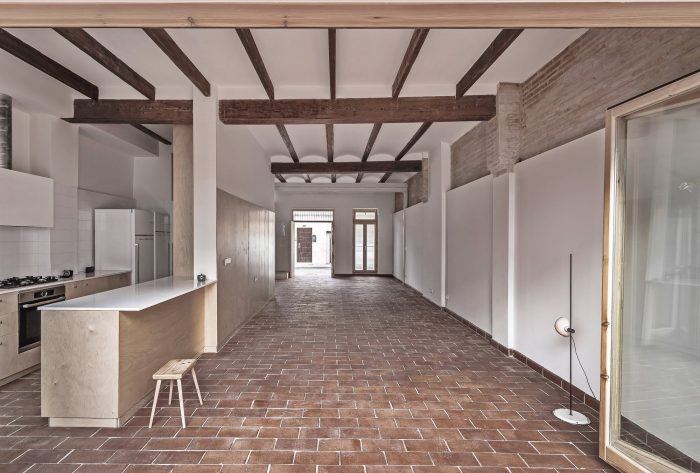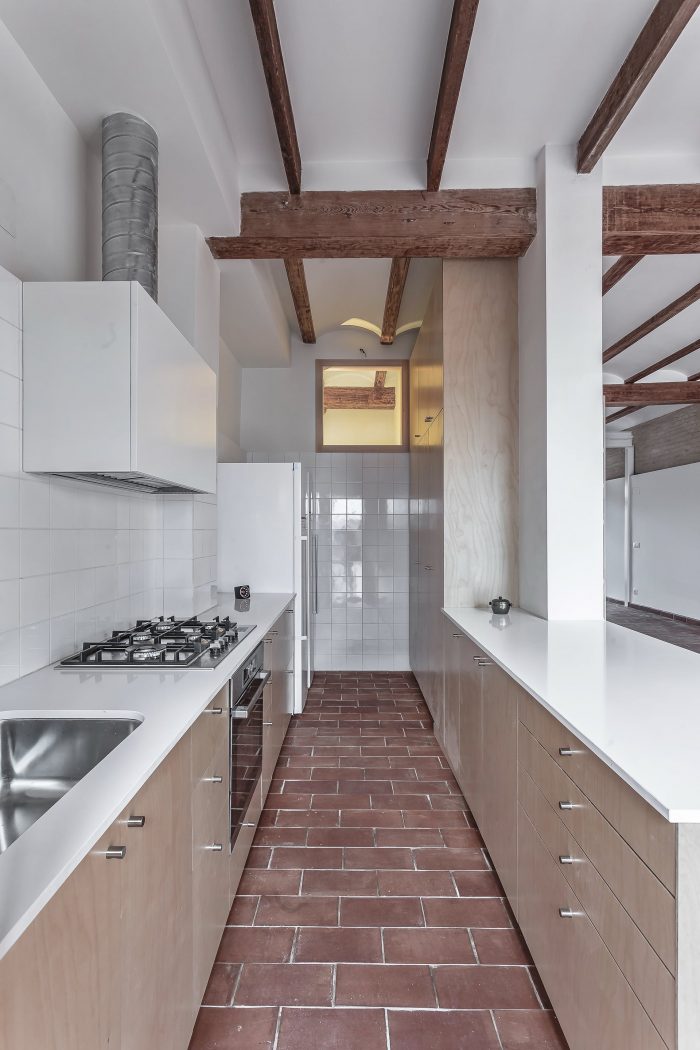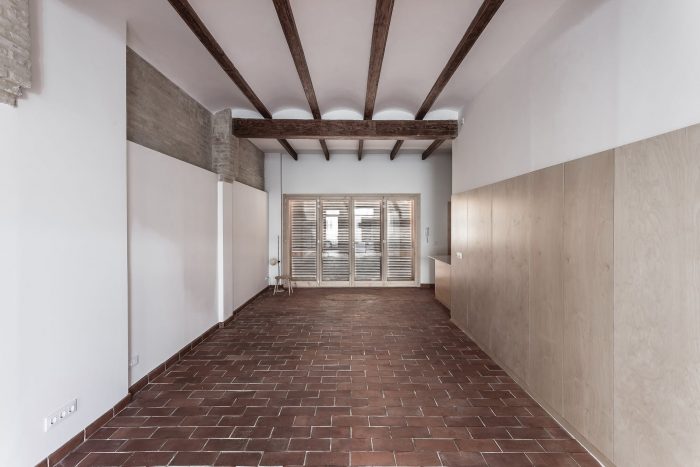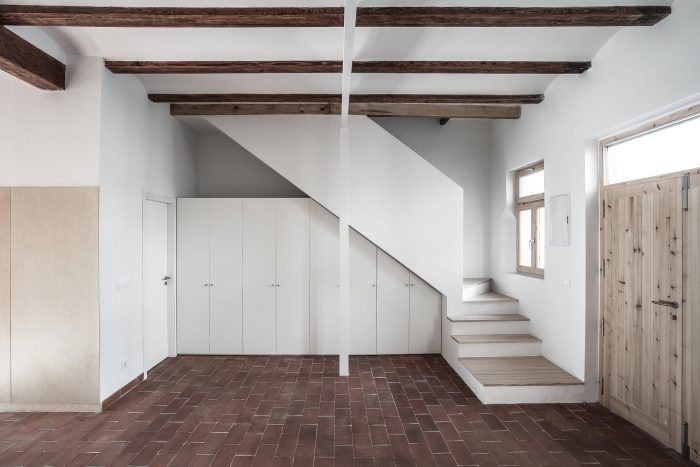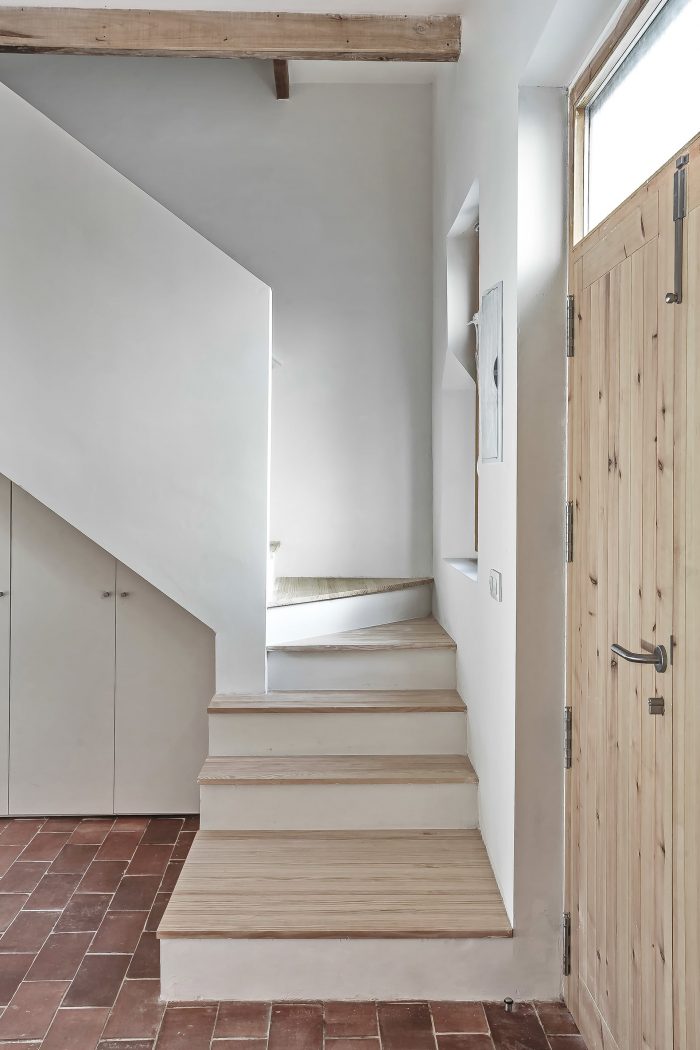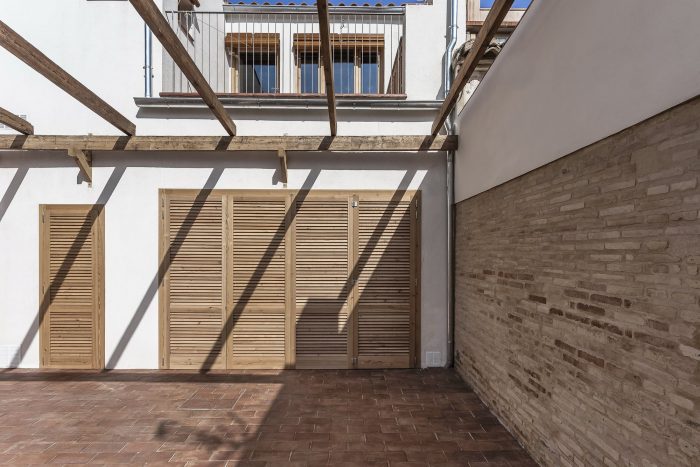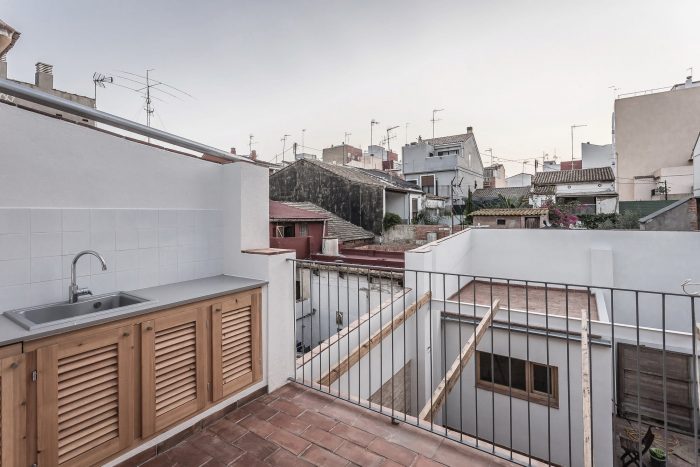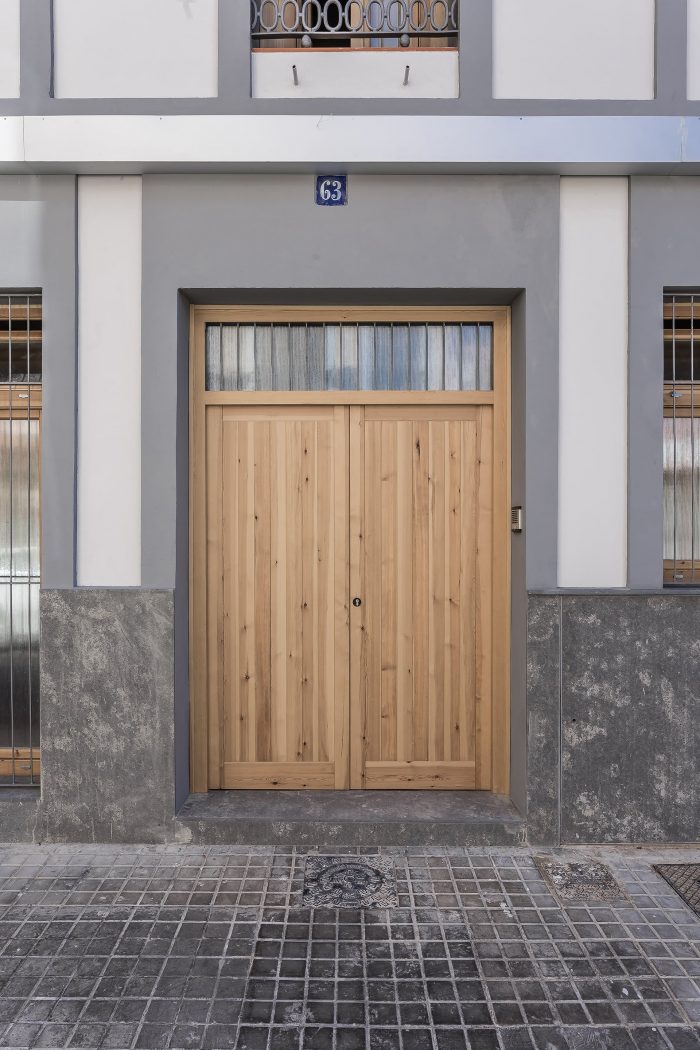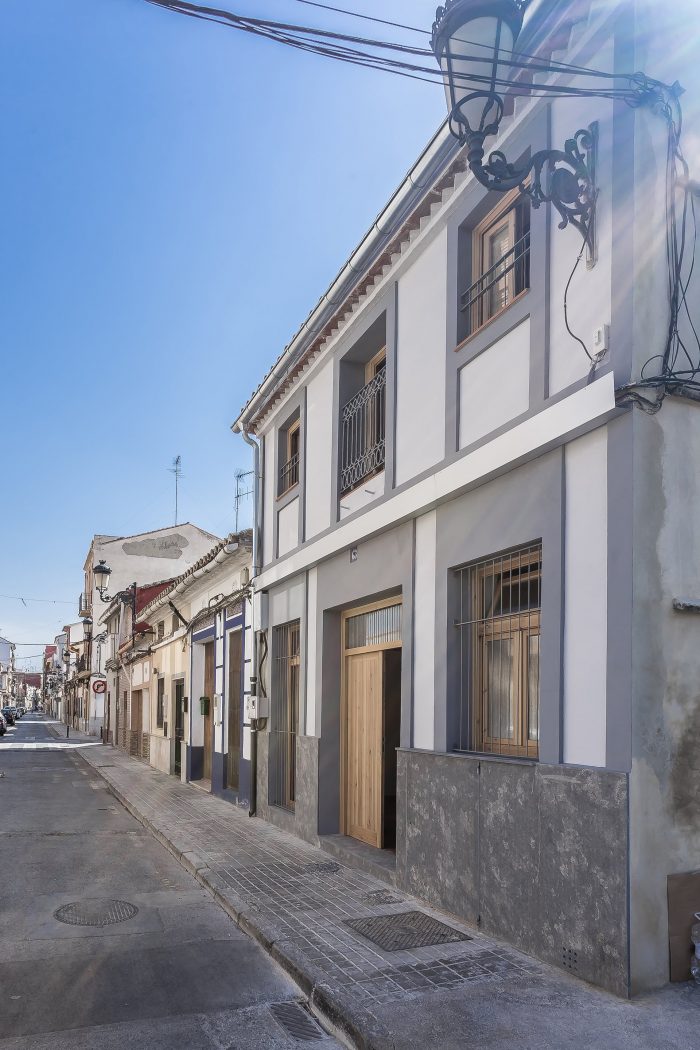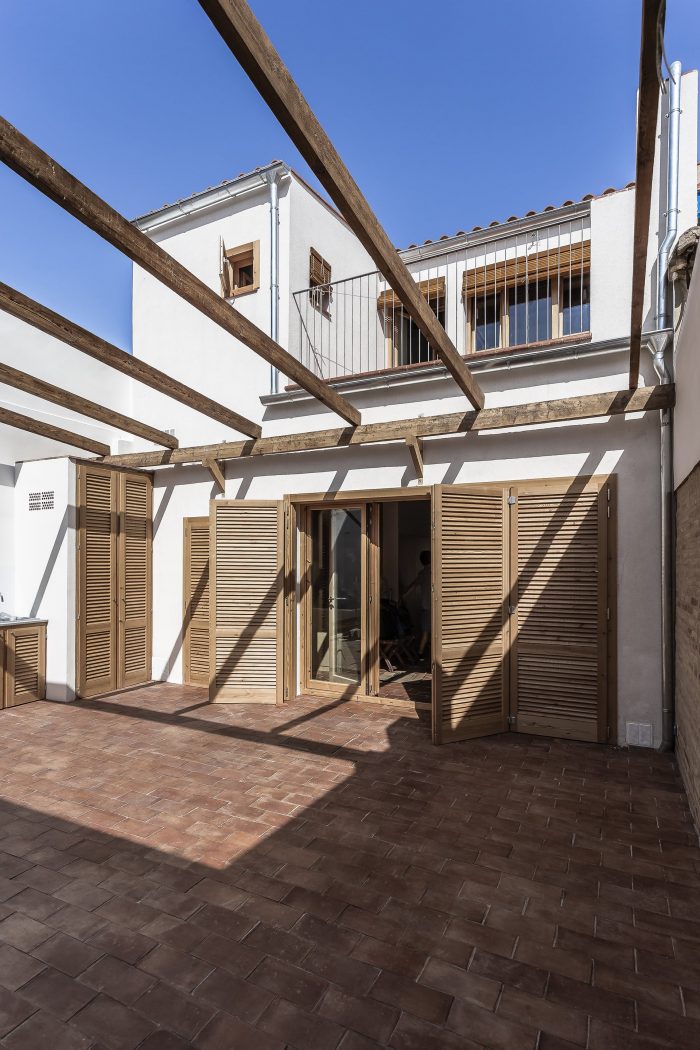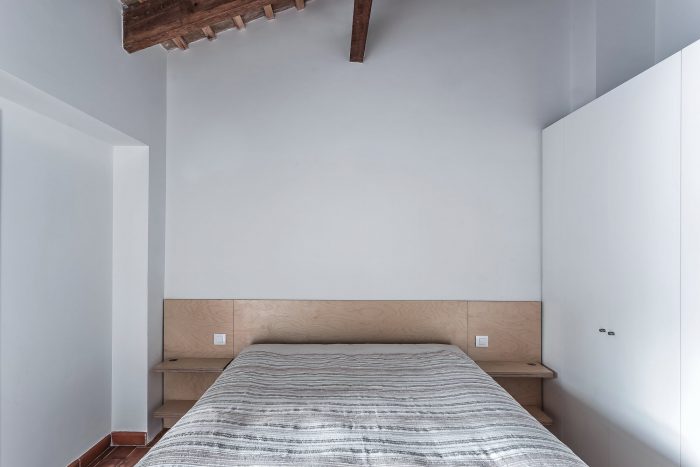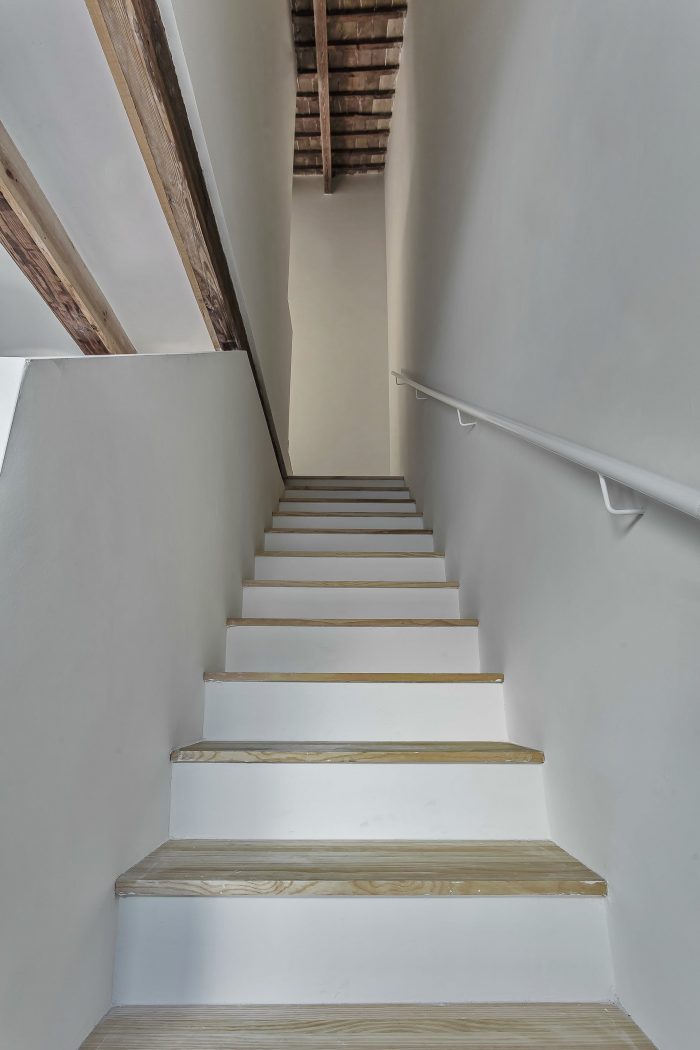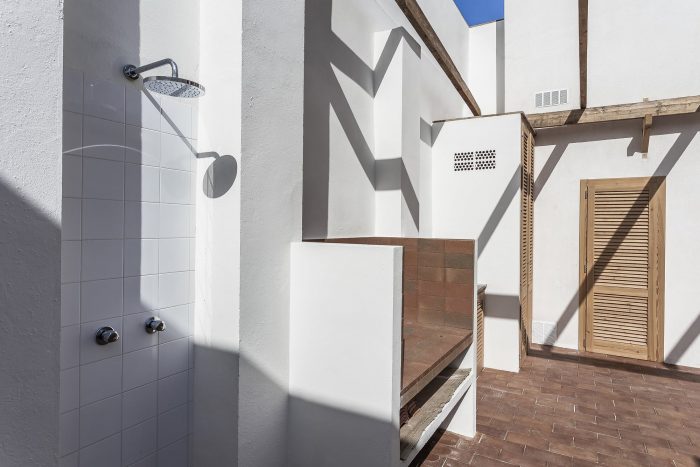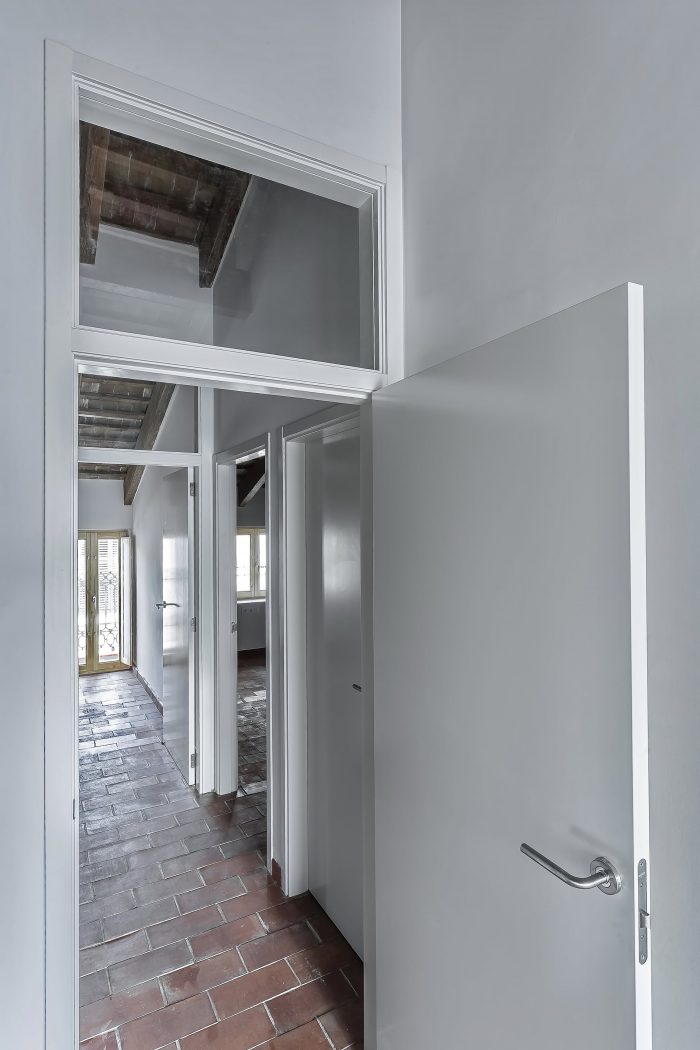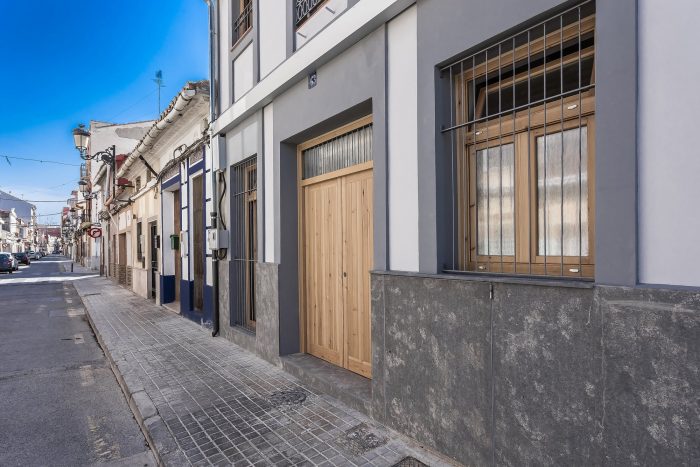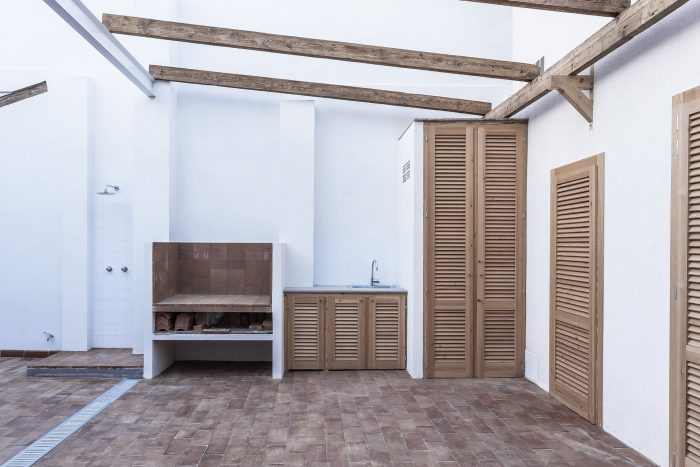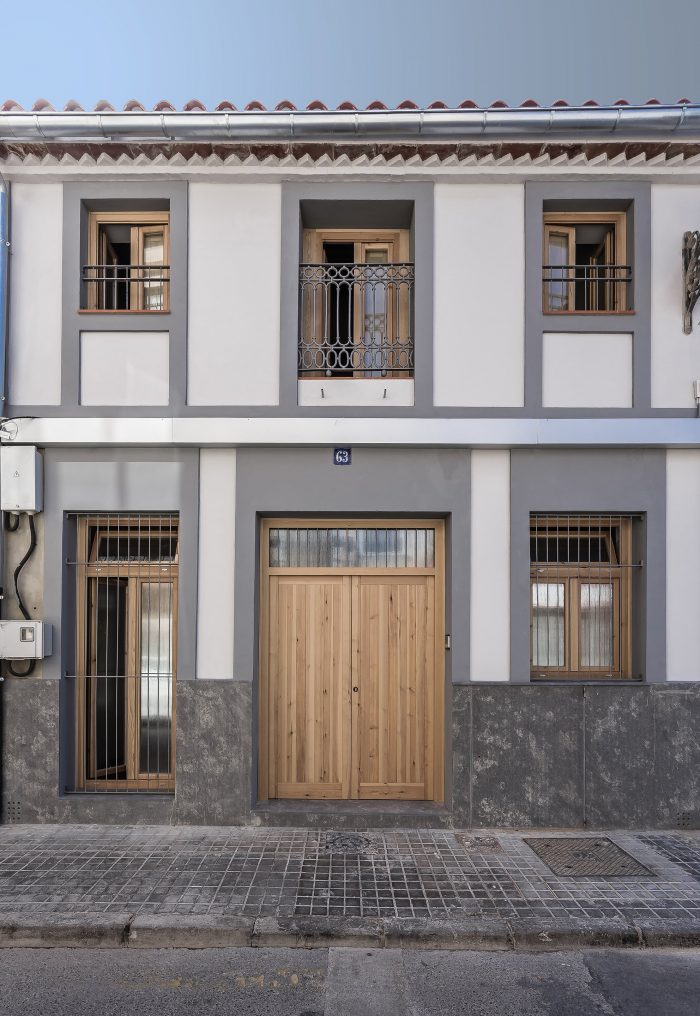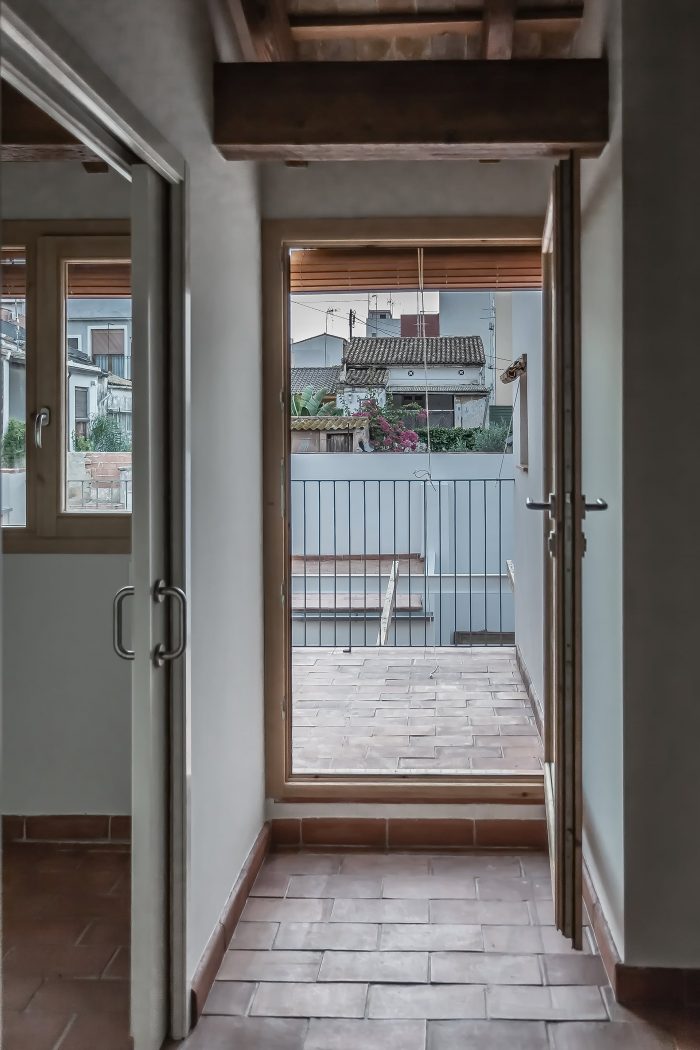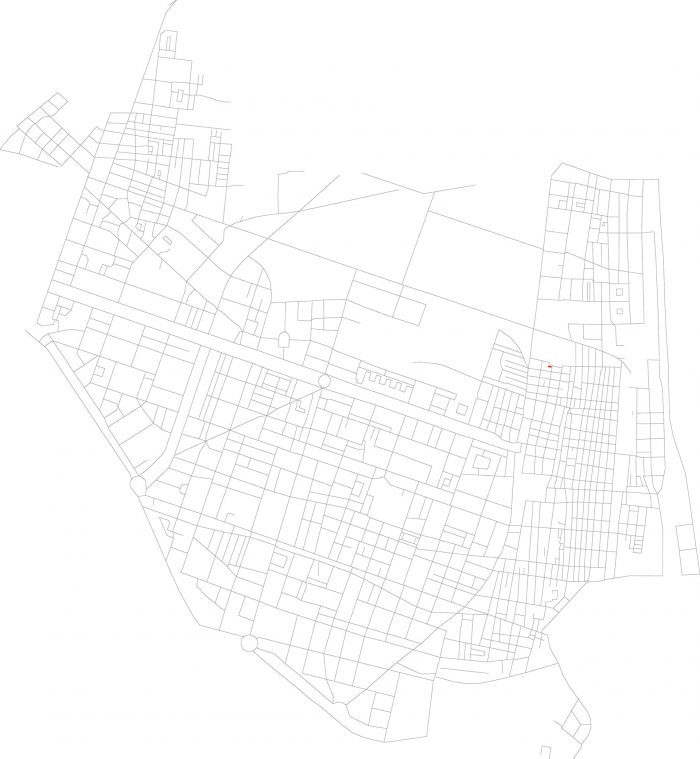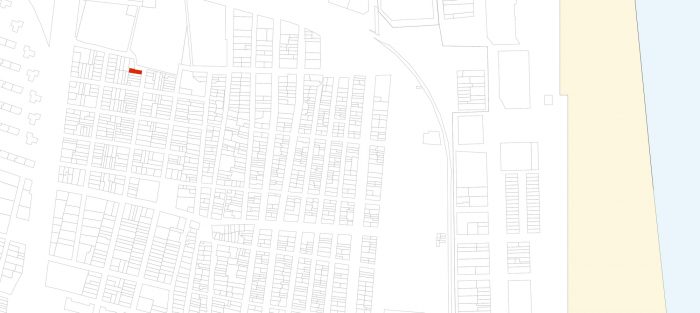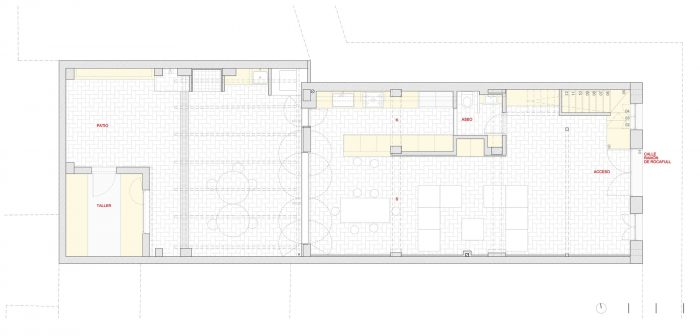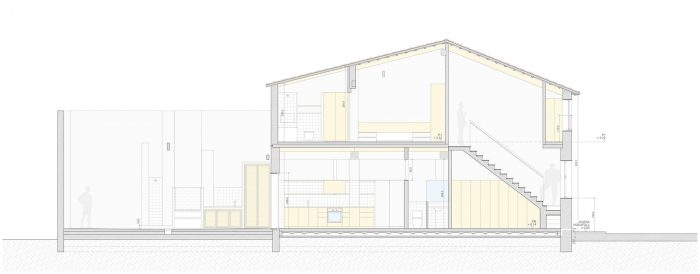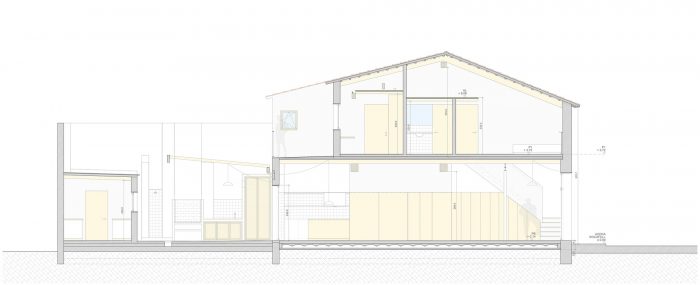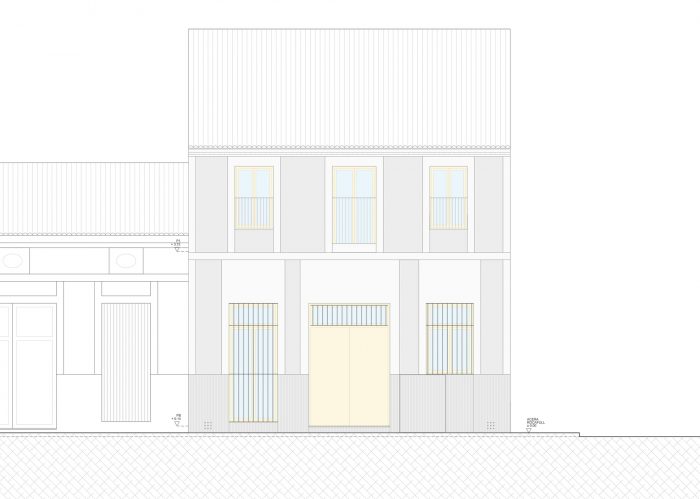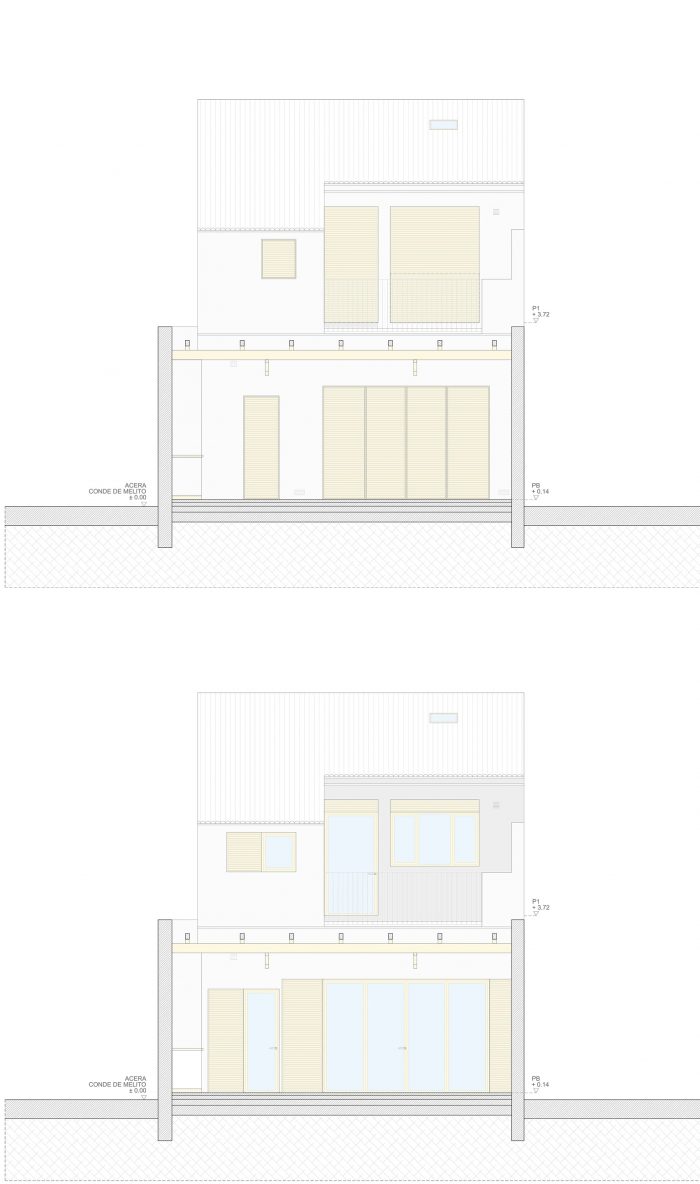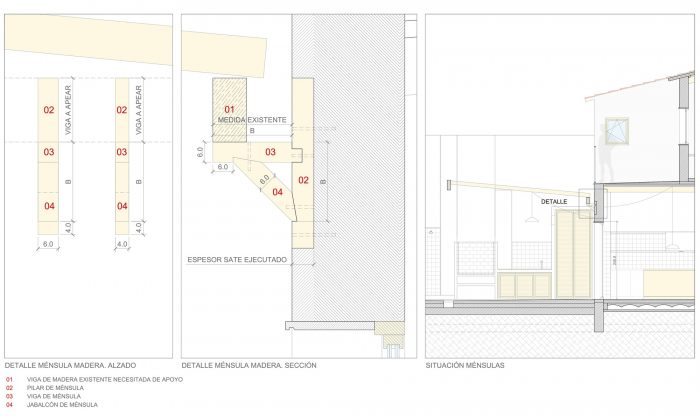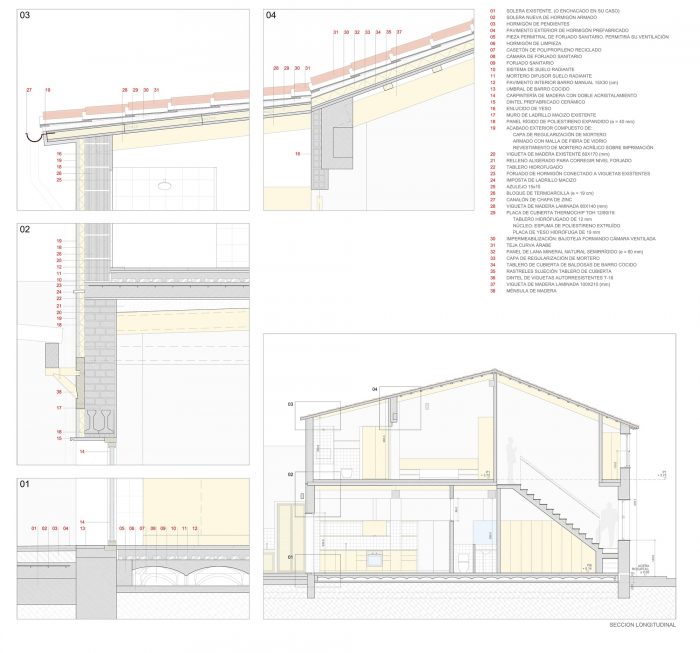它是关于复兴一个在党墙之间的100年历史的房子,处于被遗弃的状态。
它位于瓦伦西亚的Cabanyal社区。一个古老的渔民区,从海岸线向内陆扩展,呈网格状。我们的地块是这个顺序中的最小单位:长方形,狭窄和深。而房子紧贴着街道,在后面留下一个天井。
It is about reviving a 100 years old house between party walls in a state of abandonment.
It is located in the Cabanyal neighborhood of Valencia. An old fisherman’s quarter that expands inland from the coastline with a grid pattern. Our plot is the minimum unit in that order: rectangular, narrow and deep. And the house sticks to the street, leaving a patio at the back.
这座房子很独特。它保留了坚实的砖墙和木梁。因此,我们看到了它的价值:手工制作的执行和精心挑选和制造的材料的质量 传统。
主要的行动是加强建筑围护结构、水平结构和甲板。脱衣、拆解和加固是基本的。因此,大陆被清空并减少到一个具有开放性内部的骨架。
The house is unique. It retains its solid brick walls and its wooden beams. So we saw its value: a handmade execution and the quality of well-selected and manufactured materials Tradition.
The main action is to strengthen the building envelope, the horizontal structure and the decks. Undress, dismantle and reinforce are basics. So the continent is emptied and reduced to a skeleton with an open interior.
这座房子是为一对有双胞胎的年轻夫妇建造的。他们已经住在这个街区,所以他们知道必须维护建筑的内在因素。他们知道我们需要解决湿度问题并促进交叉通风。我们需要冬天的阳光,我们将躲避夏天的阳光。
因此,项目的重点是在一楼提供一个流动的开放空间,同时在一楼包装它,以包括整个要求的项目。
The house is for a young couple with twins. They are already living in this quarter, so they know that intrinsic aspects of the building that must be maintained. They know we need to solve the humidity issues and to promote cross ventilation. That we need the winter sun and that we will hide from the summer sun.
So, the project focuses on giving a fluid open space on the ground floor, while packing it on the first floor to include the entire requested program.
在底层,我们试图连接两个相对的外墙,从街道到后院,将其整个程序压缩到一边,紧挨着楼梯。因此,建立了一个单一的开放空间,连接两个外部空间,产生了一个从入口到后院的逻辑视觉路径。
On ground floor we try to connect two opposite facades, from the street to the backyard, compressing its entire program aside, next to the stairs. Thus, a single open space is built and connects both exterior spaces, generating a logical visual path from the entrance to the backyard.
在一楼,我们试图连接两个相对的外墙,从街道到后院,将其整个程序压缩到一边,紧挨着楼梯。因此,建立了一个单一的开放空间,连接两个外部空间,产生了一个从入口到后院的逻辑视觉路径。
On first floor, the existing height is used to divide the spaces vertically. A wooden mezzanine is created to increase the surface of the bedrooms. And, as a lookout post, a terrace overlooking our own patio and the void formed by the rest of the backyards of the block is rebuilt.
客户和建筑师之间的交流允许选择粘土和木材的不完美和明显的脆弱性。在一个不完美的材料被质疑的时候,那些需要集中精力生产和放置的材料,需要维护的材料;决定选择它们作为对这个地方,对房子本身的谦虚而真诚的回应。
粘土用于墙壁,用于甲板板和屋顶瓦片。还有人行道,它在外面无动于衷地延伸到边界。木材用于窗户、家具和百叶窗。楼梯和夹层也是如此。
The communion among clients and architect allows choosing the imperfection and apparent fragility of clay and wood. At a time when imperfect materials are questioned, those that require concentration in its production and placement, that will require maintenance; it is decided to select them as a modest but sincere response with the place, with the house itself.
The clay for the walls, for the deck slabs and roof tiles. And for the pavements, which extend outside impassive to borders. Wood for windows, furniture and blinds. And for the staircase and mezzanines.
有了这一切,干预能够集中力量操纵房子和现有的,与它的记忆和存在方式相联系,与它的纹理和它与萦绕和包裹着它的地中海光线的关系相联系。
这种操作试图把房子变成它自己的改进版,比预期的更进一步,以便它能再持续很长时间,希望附近的其他地方也能用那些定义它的相同价值来做。
With all this, the intervention is able to concentrate the forces in the manipulation of the house and the existing, allying itself with its memory and its way of being, with its textures and its relationship with the Mediterranean light that haunts and wraps it.
And this manipulation tries to transform the house into an improved version of itself, taken further than expected, so that it lasts another long time, hoping that the rest of the neighborhood will also do it with those same values that define it.
Architects: Paco Oria Estudio
Area : 165 m²
Year : 2019
Photographs :Jose Luis Iniesta
Manufacturers : Caviti, Daikin, Pando, Thermochip, Vicente Camp SL
Lead Architects : Paco Oria
Clients : Carol, Romain
Collaborators : Tania Magro Huertas, Amaya Martínez Marcos
City : Valencia
Country : Spain

